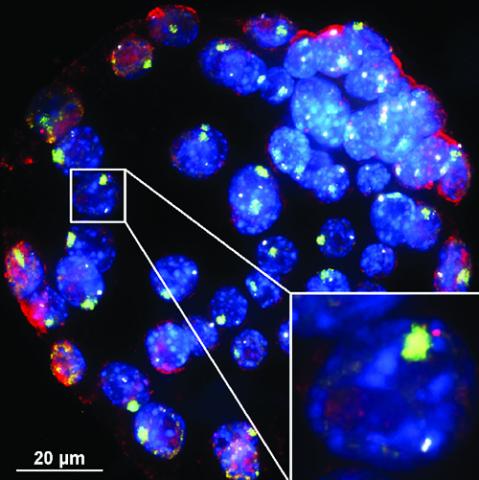A New Gene Helps Silence One X Chromosome
Female animals possess two X chromosomes in each of their cells, yet only one X—the same one each time—is transcribed. Researchers know that a gene called Xist controls this chromosomal silencing. Now they have discovered a new gene, XistAR, that makes long non-coding RNA (lncRNA) to help control Xist itself.

“Only a handful of lncRNAs we know actually have a function. So we have not only discovered this RNA but also provided a functional importance of it,” said Sundeep Kalantry at the University of Michigan Medical School, leader of the study published recently in Nature Communications. “It puts us closer to figuring out how the Xs choose which one of the two Xs to inactivate.”In 1961, Mary Frances Lyon proposed that one of the two X chromosomes in females is inactivated, but it wasn’t until 1991 that researchers discovered the first gene involved in this process, Xist (pronounced “exist”). Studies showed that Xist was the only gene transcribed from the inactive X chromosome and that Xist RNA physically coated the inactive X and recruited various proteins to silence other X-linked genes.
More recently, Kalantry’s lab was studying part of the Xist locus called Tsix, which is transcribed from the active X chromosome in a direction antisense to Xist. When using cell lines lacking Tsix expression, however, they still saw antisense transcription at the Xist locus and found that it unexpectedly came from the inactive X chromosome. Using 5´ RNA ligase mediated–rapid amplification of cDNA ends, RT-PCR, and RNA FISH, the researchers mapped the gene to the Xist locus and called the gene XistAR (Xist Activating RNA); it was also antisense to Xist.
To determine XistAR’s function, Kalantry and colleagues teamed up with Takashi Sado at Kinki University in Japan, who had created a strain of mouse with mutated Xist antisense transcription. “When we used those mice and perturbed XistAR expression, Xist itself could not be expressed,” said Kalantry. In fact, XistAR boosts Xist expression. “If you truncate or mutate XistAR, Xist levels go down by 90%.”
Kalantry doesn’t know exactly how XistAR increases Xist levels, but he posits that this lncRNA might be an enhancer RNA that triggers a three-dimensional configuration change at the 5´ end of the Xist locus.
“XistAR certainly controls Xist, and there must be molecules that control XistAR,” said Kalantry. “Now we are trying to figure out what controls XistAR expression itself.”
Reference
Sarkar MK, Gayen S, Kumar S, Maclary E, Buttigieg E, Hinten M, Kumari A, Harris C, Sado T, Kalantry S. An Xist-activating antisense RNA required for X-chromosome inactivation. Nat Commun. 2015 Oct 19;6:8564.